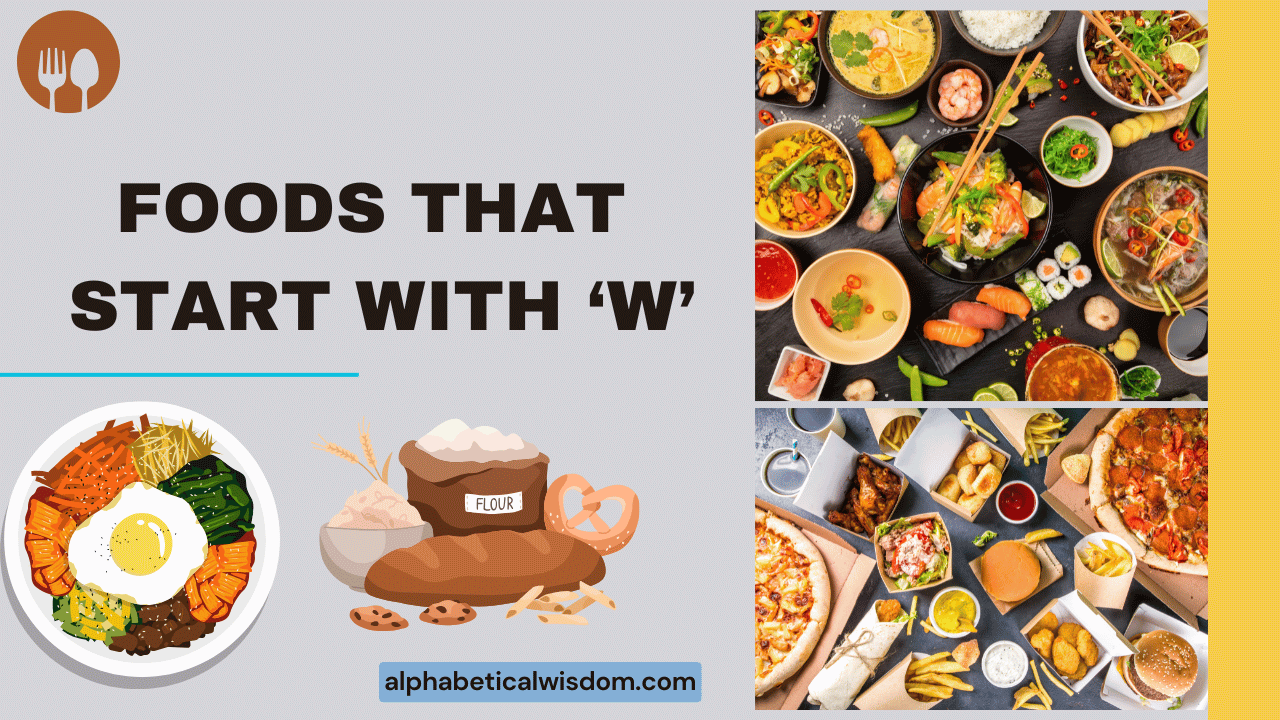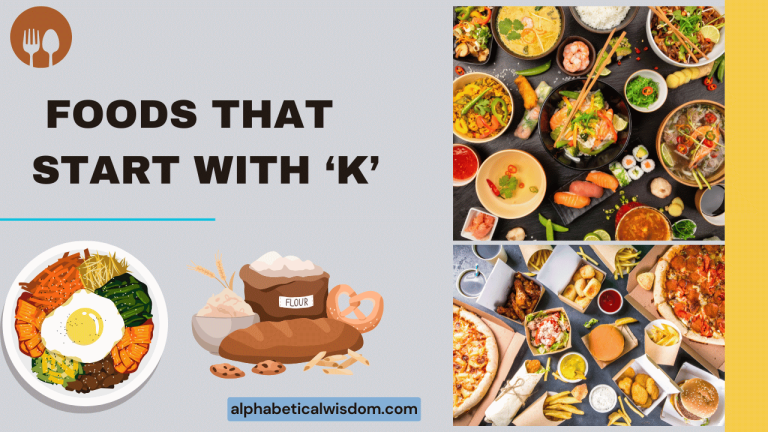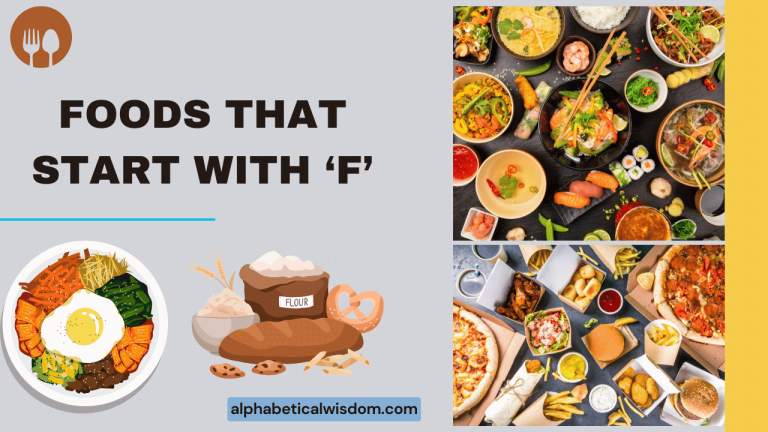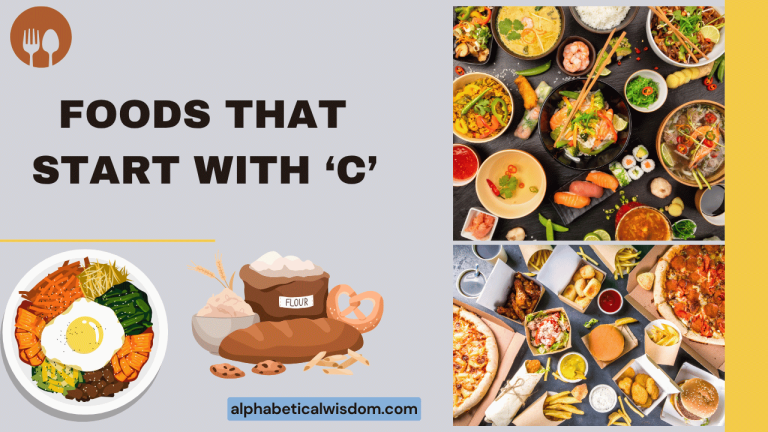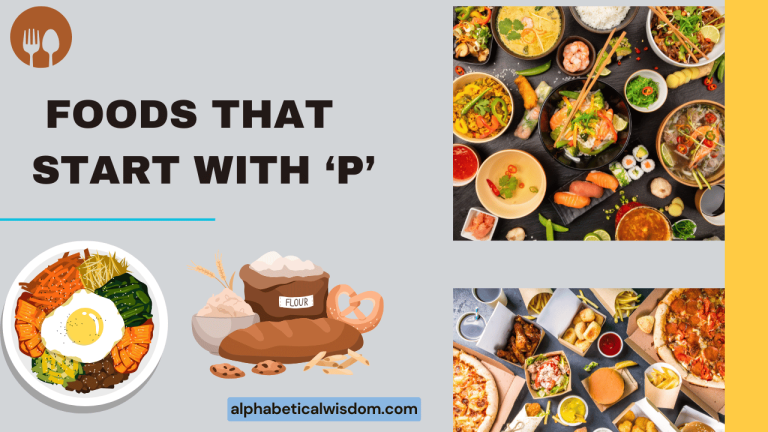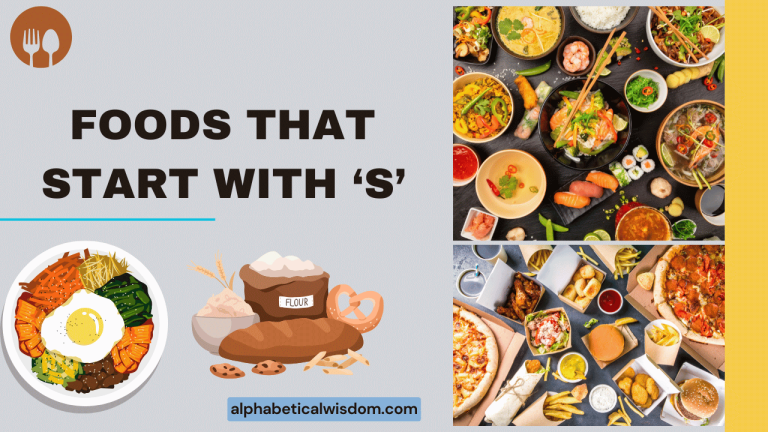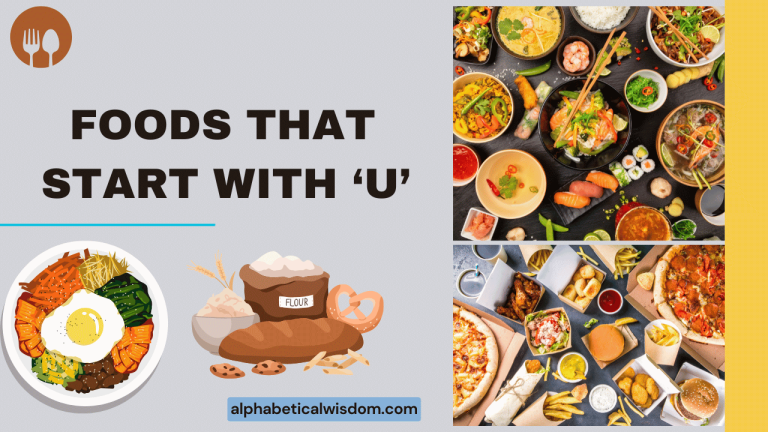Foods That Start With W: A Grammatical Exploration
Exploring the world of foods that begin with the letter ‘W’ offers a unique opportunity to delve into English grammar, particularly focusing on nouns, articles, and pluralization. This article aims to provide a comprehensive understanding of how these food names function grammatically within sentences.
Mastering the use of these words enhances vocabulary and improves overall language proficiency. This guide is beneficial for English language learners, culinary enthusiasts, and anyone looking to expand their knowledge of food-related vocabulary and grammar.
By the end of this article, you will confidently use these ‘W’ food words in various grammatical contexts.
This exploration will also cover common grammatical mistakes and provide practice exercises to reinforce learning. We will look at both countable and uncountable nouns, and how they affect sentence structure.
The goal is to equip readers with the knowledge and skills to use these food-related terms accurately and effectively in their writing and speech.
Table of Contents
- Definition of Food Nouns Starting with ‘W’
- Structural Breakdown: Singular vs. Plural
- Types and Categories of ‘W’ Foods
- Examples of ‘W’ Foods in Sentences
- Usage Rules for ‘W’ Food Nouns
- Common Mistakes with ‘W’ Food Nouns
- Practice Exercises
- Advanced Topics
- FAQ: Frequently Asked Questions
- Conclusion
Definition of Food Nouns Starting with ‘W’
Food nouns starting with ‘W’ refer to edible items whose names begin with the letter ‘W’. These nouns can represent a wide variety of foods, including fruits, vegetables, dishes, and condiments.
They function grammatically as nouns, meaning they can serve as subjects, objects, or complements in a sentence. Understanding these nouns is crucial for expanding culinary vocabulary and enhancing communication about food.
These nouns can be either countable or uncountable, which affects how they are used with articles and quantifiers. Countable nouns can be singular or plural, while uncountable nouns are typically used in their singular form. For example, “walnut” is countable (one walnut, many walnuts), while “watercress” is often treated as uncountable.
Structural Breakdown: Singular vs. Plural
The structural breakdown of food nouns starting with ‘W’ involves understanding the difference between singular and plural forms, and whether the noun is countable or uncountable. Countable nouns have both singular and plural forms, while uncountable nouns typically only have a singular form.
The plural form is usually created by adding “-s” or “-es” to the singular form, although there can be exceptions.
For example, the word “waffle” is a countable noun. The singular form is “waffle,” and the plural form is “waffles.” On the other hand, “water” which, while not exclusively a food, is often consumed with food, is an uncountable noun.
It only has a singular form, “water,” and we don’t say “waters.” The correct way to quantify water is to use terms like “a glass of water” or “some water.”
Types and Categories of ‘W’ Foods
Foods that start with ‘W’ can be categorized into several groups based on their type and origin. This categorization helps in understanding their specific characteristics and usage.
Fruits and Vegetables
This category includes fruits and vegetables with names starting with ‘W’. These are often used in salads, main dishes, and snacks.
Examples include watermelon, walnuts, watercress, and winter squash.
Baked Goods
This category encompasses baked items such as waffles, wafers, and wheat bread. These are commonly consumed for breakfast, snacks, or as part of a meal.
Dishes and Prepared Foods
This category includes prepared dishes and meals with names starting with ‘W’, such as Waldorf salad, wontons, and Welsh rarebit. These dishes often have specific cultural or regional origins.
Sauces and Condiments
This category includes sauces and condiments like Worcestershire sauce. These are used to enhance the flavor of other foods.
Drinks
This category includes beverages that start with ‘W’, such as water and wine. These drinks are essential for hydration and often complement meals.
Examples of ‘W’ Foods in Sentences
Here are examples of how ‘W’ food nouns are used in sentences. The examples are categorized by countable, uncountable, and plural forms to illustrate different grammatical contexts.
Countable Nouns
Countable nouns can be counted and have both singular and plural forms. They can be used with articles (a, an, the) and quantifiers (many, few, several).
The following table provides examples of countable ‘W’ food nouns used in sentences.
| Sentence | Grammatical Function |
|---|---|
| I ate a delicious waffle for breakfast. | “Waffle” is a singular countable noun, object of the verb “ate.” |
| She bought several walnuts from the market. | “Walnuts” is a plural countable noun, object of the verb “bought.” |
| The chef prepared a batch of crispy wontons. | “Wontons” is a plural countable noun, object of the verb “prepared.” |
| He prefers a whole-wheat wrap for lunch. | “Wrap” is a singular countable noun, object of the verb “prefers.” |
| They served warm Welsh cakes at the tea party. | “Welsh cakes” is a plural countable noun, object of the verb “served.” |
| She added a wafer to her ice cream sundae. | “Wafer” is a singular countable noun, object of the verb “added.” |
| The recipe calls for two winter squashes. | “Winter squashes” is a plural countable noun, object of the preposition “for.” |
| He ordered three wings as an appetizer. | “Wings” is a plural countable noun, object of the verb “ordered.” |
| The baker made a fresh batch of wheat rolls. | “Wheat rolls” is a plural countable noun, object of the verb “made.” |
| She enjoyed a slice of watermelon wedge. | “Wedge” is a singular countable noun, object of the preposition “of.” |
| The restaurant served miniature Yorkshire puddings with the roast beef. | “Yorkshire puddings” is a plural countable noun, object of the verb “served.” |
| He dipped his fries in a generous dollop of Worcestershire sauce. | “Worcestershire sauce” is treated as uncountable here, referring to the sauce in general, but can be countable when referring to specific bottles or brands. |
| The chef used a special wok to stir-fry the vegetables. | “Wok” is a singular countable noun, object of the verb “used.” |
| She packed a wheat cracker in her lunchbox. | “Wheat cracker” is a singular countable noun, object of the verb “packed.” |
| The children devoured the colorful watermelon candies. | “Watermelon candies” is a plural countable noun, object of the verb “devoured.” |
| He carefully peeled a ripe white peach. | “White peach” is a singular countable noun, object of the verb “peeled.” |
| The street vendor sold crispy wonton wrappers. | “Wonton wrappers” is a plural countable noun, object of the verb “sold.” |
| She added a dash of white pepper to the soup. | “White pepper” is treated as uncountable here, referring to the spice in general, but can be countable when referring to individual peppercorns. |
| The farmers market had a variety of winter greens. | “Winter greens” is a plural countable noun, object of the preposition “of.” |
| He ordered a whiskey sour at the bar. | “Whiskey sour” is a singular countable noun, object of the verb “ordered.” |
| The bakery offered a tempting selection of walnut cookies. | “Walnut cookies” is a plural countable noun, object of the preposition “of.” |
| She enjoyed a refreshing glass of white wine with her dinner. | “White wine” is treated as uncountable here, referring to the wine in general, but can be countable when referring to specific glasses or bottles. |
| The chef garnished the dish with a sprig of watercress. | “Watercress” is treated as uncountable here, referring to the herb in general. |
| He spread cream cheese on a crispy wheat biscuit. | “Wheat biscuit” is a singular countable noun, object of the preposition “on.” |
| The restaurant is known for its spicy wings. | “Wings” is a plural countable noun, subject complement. |
Uncountable Nouns
Uncountable nouns cannot be counted and typically do not have a plural form. They are often used with quantifiers like “some,” “much,” and “little.”
The following table provides examples of uncountable ‘W’ food nouns used in sentences.
| Sentence | Grammatical Function |
|---|---|
| We need to buy some wheat for the bread. | “Wheat” is an uncountable noun, object of the preposition “for.” |
| She added a little Worcestershire sauce to the stew. | “Worcestershire sauce” is an uncountable noun, object of the preposition “to.” |
| There is too much water in the soup. | “Water” is an uncountable noun, subject of the sentence. |
| He likes to drink wine with his dinner. | “Wine” is an uncountable noun, object of the verb “drink.” |
| The salad contains fresh watercress. | “Watercress” is an uncountable noun, object of the verb “contains.” |
| She prefers whole wheat bread. | “Whole wheat” is an uncountable noun, modifying “bread.” |
| The chef used high-quality white chocolate in the dessert. | “White chocolate” is an uncountable noun, object of the preposition “in.” |
| They added a sprinkle of white pepper to the dish. | “White pepper” is an uncountable noun, object of the preposition “of.” |
| He enjoys a glass of cold white wine in the evening. | “White wine” is an uncountable noun, object of the preposition “of.” |
| The recipe requires a cup of walnut oil. | “Walnut oil” is an uncountable noun, object of the preposition “of.” |
| She used winter melon in the soup. | “Winter melon” is an uncountable noun, object of the preposition “in.” |
| He added a splash of whiskey to the sauce. | “Whiskey” is an uncountable noun, object of the preposition “of.” |
| The bakery sells artisanal wheat flour. | “Wheat flour” is an uncountable noun, object of the verb “sells.” |
| She bought a loaf of whole wheat bread. | “Whole wheat bread” is an uncountable noun, object of the verb “bought.” |
| The dip includes finely chopped water chestnuts. | “Water chestnuts” is a plural countable noun, object of the verb “includes.” |
| He seasoned the steak with a pinch of white salt. | “White salt” is an uncountable noun, object of the preposition “of.” |
| The salad is dressed with a light walnut vinaigrette. | “Walnut vinaigrette” is an uncountable noun, object of the preposition “with.” |
| She used fresh watercress to garnish the soup. | “Watercress” is an uncountable noun, object of the verb “used.” |
| The recipe calls for a tablespoon of white vinegar. | “White vinegar” is an uncountable noun, object of the preposition “of.” |
| He added a cube of white sugar to his coffee. | “White sugar” is an uncountable noun, object of the preposition “of.” |
| The marinade contains a hint of Worcestershire. | “Worcestershire” is an uncountable noun, object of the preposition “of.” |
| She enjoyed a bowl of winter squash soup. | “Winter squash soup” is an uncountable noun, object of the verb “enjoyed.” |
| He prefers his coffee with a dash of whole milk. | “Whole milk” is an uncountable noun, object of the preposition “with.” |
| The dessert is topped with grated white chocolate. | “White chocolate” is an uncountable noun, object of the preposition “with.” |
| She made a smoothie with watermelon juice. | “Watermelon juice” is an uncountable noun, object of the preposition “with.” |
Plural Forms
The plural forms of ‘W’ food nouns are used to indicate multiple items. These forms are typically created by adding “-s” or “-es” to the singular form.
The following table provides examples of plural ‘W’ food nouns used in sentences.
| Sentence | Grammatical Function |
|---|---|
| The recipe calls for a cup of chopped walnuts. | “Walnuts” is a plural countable noun, object of the preposition “of.” |
| She made delicious waffles for the brunch. | “Waffles” is a plural countable noun, object of the verb “made.” |
| He ordered a plate of crispy wontons at the restaurant. | “Wontons” is a plural countable noun, object of the preposition “of.” |
| The store sells different types of wraps. | “Wraps” is a plural countable noun, object of the preposition “of.” |
| They served miniature Welsh cakes at the tea party. | “Welsh cakes” is a plural countable noun, object of the verb “served.” |
| She decorated the cake with colorful wafers. | “Wafers” is a plural countable noun, object of the preposition “with.” |
| The farmers market had a variety of winter squashes. | “Winter squashes” is a plural countable noun, object of the preposition “of.” |
| He ordered a basket of spicy wings as an appetizer. | “Wings” is a plural countable noun, object of the preposition “of.” |
| The bakery sells fresh wheat rolls every morning. | “Wheat rolls” is a plural countable noun, object of the verb “sells.” |
| She bought a bag of sweet watermelon candies for the children. | “Watermelon candies” is a plural countable noun, object of the preposition “of.” |
| The restaurant served warm Yorkshire puddings with the roast beef. | “Yorkshire puddings” is a plural countable noun, object of the verb “served.” |
| He packed several wheat crackers in his lunchbox. | “Wheat crackers” is a plural countable noun, object of the verb “packed.” |
| The children enjoyed the colorful watermelon candies. | “Watermelon candies” is a plural countable noun, object of the verb “enjoyed.” |
| She carefully selected a variety of winter greens. | “Winter greens” is a plural countable noun, object of the preposition “of.” |
| The bakery offered a tempting selection of walnut cookies. | “Walnut cookies” is a plural countable noun, object of the preposition “of.” |
| He enjoys snacking on salted walnuts in the evening. | “Walnuts” is a plural countable noun, object of the preposition “on.” |
| She prepared crispy wontons for the party. | “Wontons” is a plural countable noun, object of the verb “prepared.” |
| The store sells a variety of wraps for quick lunches. | “Wraps” is a plural countable noun, object of the verb “sells.” |
| The chef garnished the dish with fresh watercress leaves. | “Watercress leaves” is a plural countable noun, object of the preposition “with.” |
| He prefers his coffee with a few wafers on the side. | “Wafers” is a plural countable noun, object of the preposition “with.” |
| The garden is filled with vibrant winter squashes. | “Winter squashes” is a plural countable noun, subject complement. |
| She ordered a platter of spicy wings for the game night. | “Wings” is a plural countable noun, object of the preposition “of.” |
| The bakery is famous for its delicious wheat rolls. | “Wheat rolls” is a plural countable noun, object of the preposition “for.” |
| He bought a bag of assorted watermelon candies for the road trip. | “Watermelon candies” is a plural countable noun, object of the preposition “of.” |
| The restaurant is known for serving authentic Yorkshire puddings. | “Yorkshire puddings” is a plural countable noun, object of the verb “serving.” |
Usage Rules for ‘W’ Food Nouns
Proper usage of ‘W’ food nouns involves understanding article usage, pluralization rules, and how to use quantifiers correctly.
Article Usage (a, an, the)
The articles “a,” “an,” and “the” are used differently depending on whether the noun is countable or uncountable, and whether it is specific or general.
- A/An: Used with singular countable nouns when they are non-specific or mentioned for the first time. “A waffle” or “An apple” (if we were discussing apples).
- The: Used with both countable and uncountable nouns when they are specific or have been previously mentioned. “The water” in the bottle, “The waffles” I made this morning.
- No Article: Used with plural countable nouns and uncountable nouns when referring to them in general. “Waffles are delicious.” “Water is essential for life.”
Pluralization Rules
Most ‘W’ food nouns form their plural by adding “-s” to the singular form. However, some may require “-es” or have irregular plural forms.
- Regular Plural: Add “-s” to the singular form. Example: waffle -> waffles, walnut -> walnuts.
- Irregular Plural: Some nouns may have irregular plural forms. Example: While not a food, “wolf” becomes “wolves,” demonstrating an irregular pluralization pattern that could be relevant in other contexts. There are no common irregular plural forms among ‘W’ food nouns.
Using Quantifiers (some, any, much, many)
Quantifiers are used to indicate the quantity of a noun. Different quantifiers are used with countable and uncountable nouns.
- Many: Used with plural countable nouns. Example: “There are many waffles on the plate.”
- Much: Used with uncountable nouns. Example: “There is much water in the glass.”
- Some: Used with both countable and uncountable nouns. Example: “I have some walnuts.” “I need some water.”
- Any: Used in questions and negative statements with both countable and uncountable nouns. Example: “Do you have any waffles?” “I don’t have any water.”
Common Mistakes with ‘W’ Food Nouns
Here are some common mistakes learners make when using ‘W’ food nouns, along with corrections.
| Incorrect | Correct | Explanation |
|---|---|---|
| I want a water. | I want some water. | “Water” is uncountable, so it cannot be used with the article “a.” |
| I ate many wheat. | I ate a lot of wheat. | “Wheat” is uncountable, so it should be used with “much” or “a lot of.” |
| There are much waffles. | There are many waffles. | “Waffles” is countable, so it should be used with “many.” |
| I like a waffle. | I like waffles. | To talk about waffles in general, use the plural form without an article. |
| Give me the water. | Give me some water. OR Give me the water in the bottle. | “Water” requires “some” unless you are referring to specific water. |
| I need an watercress. | I need some watercress. | “Watercress” is uncountable, so it cannot be used with the article “an.” |
| I bought a wheat. | I bought some wheat. | “Wheat” is uncountable, so it cannot be used with the article “a.” |
| There is many wine. | There is much wine. | “Wine” is uncountable, so it should be used with “much.” |
| I want the waffles. | I want some waffles. OR I want the waffles on the table. | “Waffles” requires “some” unless you are referring to specific waffles. |
| She added many Worcestershire sauce. | She added much Worcestershire sauce. | “Worcestershire sauce” is uncountable, so it should be used with “much.” |
Practice Exercises
Test your understanding of ‘W’ food nouns with these exercises.
Exercise 1: Fill in the Blanks
Fill in the blanks with the correct form of the ‘W’ food noun in parentheses, using appropriate articles or quantifiers.
| Question | Answer |
|---|---|
| I would like _______ (waffle) for breakfast. | I would like a waffle for breakfast. |
| She needs to buy _______ (wheat) for the cake. | She needs to buy some wheat for the cake. |
| There are _______ (walnut) in the salad. | There are walnuts in the salad. |
| He added _______ (Worcestershire sauce) to the steak. | He added some Worcestershire sauce to the steak. |
| Do you want _______ (water)? | Do you want some water? |
| She prefers _______ (whole wheat bread) over white bread. | She prefers whole wheat bread over white bread. |
| I ate _______ (wonton) at the restaurant. | I ate a wonton at the restaurant. |
| They served _______ (Welsh cake) at the party. | They served Welsh cakes at the party. |
| She decorated the cake with _______ (wafer). | She decorated the cake with wafers. |
| We bought _______ (winter squash) from the market. | We bought a winter squash from the market. |
Exercise 2: Correct the Sentences
Correct the following sentences that contain errors in the use of ‘W’ food nouns.
| Incorrect Sentence | Correct Sentence |
|---|---|
| I want a water. | I want some water. |
| She needs many wheat. | She needs a lot of wheat. |
| There is much waffles on the plate. | There are many waffles on the plate. |
| I like the waffle. | I like waffles. |
| Give me a water. | Give me some water. |
| She added many Worcestershire sauce to the stew. | She added much Worcestershire sauce to the stew. |
| I ordered a wings for dinner. | I ordered wings for dinner. |
| He bought a whole wheat breads. | He bought some whole wheat bread. |
| She garnished the soup with a watercress. | She garnished the soup with some watercress. |
| They prepared a wontons for the appetizer. | They prepared wontons for the appetizer. |
Exercise 3: Sentence Construction
Create sentences using the following ‘W’ food nouns in the specified context.
| Word | Context | Example Sentence |
|---|---|---|
| Waffles | Breakfast | We had delicious waffles with syrup and berries for breakfast. |
| Water | Thirst | I was very thirsty, so I drank a glass of cold water. |
| Walnuts | Snack | She enjoys snacking on a handful of walnuts in the afternoon. |
| Worcestershire sauce | Marinade | He added Worcestershire sauce to the marinade for the steak. |
| Wheat | Bread | The baker uses high-quality wheat to make the bread. |
| Wontons | Soup | The soup was filled with savory wontons. |
| Welsh Cakes | Tea Party | They served warm Welsh cakes at the tea party. |
| Winter Squash | Soup | She made a creamy winter squash soup for dinner. |
| White Wine | Dinner | We enjoyed a glass of chilled white wine with our seafood dinner. |
| Wings | Appetizer | They ordered spicy wings as an appetizer at the restaurant. |
Advanced Topics
For advanced learners, understanding idiomatic expressions and cultural contexts related to ‘W’ foods can further enhance their language skills.
Idiomatic Expressions with ‘W’ Foods
While there aren’t many common idiomatic expressions specifically using ‘W’ foods, considering related concepts can be helpful. For example, “water under the bridge” is an idiom related to water, meaning something that is in the past and no longer important.
Understanding such idioms enriches language comprehension.
Cultural Contexts of ‘W’ Foods
Many ‘W’ foods have significant cultural importance in various regions. For example, waffles are a popular breakfast item in Belgium and the United States.
Welsh cakes are a traditional treat in Wales. Understanding these cultural contexts adds depth to language learning and appreciation.
FAQ: Frequently Asked Questions
Here are some frequently asked questions about using ‘W’ food nouns in English.
- Is “water” a countable or uncountable noun?
“Water” is generally an uncountable noun. You can’t say “one water” or “two waters” unless you are referring to specific bottles or types of water. Instead, you would say “a glass of water” or “some water.” - How do I use articles with “wheat”?
“Wheat” is an uncountable noun, so you generally don’t use “a” or “an” with it. You would say “some wheat” or “the wheat” if you are referring to specific wheat. - What is the plural form of “waffle”?
The plural form of “waffle” is “waffles.” - Can I use “much” with “walnuts”?
No, “walnuts” is a countable noun, so you should use “many” instead of “much.” For example, “There are many walnuts in the salad.” - When should I use “some” with ‘W’ food nouns?
Use “some” with uncountable nouns like “water” and “wheat” and with plural countable nouns like “waffles” and “walnuts” when you are referring to an unspecified quantity. - How do I ask a question about the quantity of “water”?
You can ask “How much water do you need?” or “Do you need any water?” - Is “Worcestershire sauce” countable or uncountable?
“Worcestershire sauce” is generally treated as uncountable. You would say “some Worcestershire sauce” or “a little Worcestershire sauce.” - How do I use ”
much” and “many” correctly with ‘W’ foods?
Use “much” with uncountable nouns (e.g., “How much water is left?”) and “many” with countable nouns (e.g., “How many waffles did you eat?”).” - Can “wine” be countable?
“Wine” is generally uncountable, but you can make it countable by referring to specific units, such as “a glass of wine” or “two bottles of wine.” - What is the difference between “wheat bread” and “whole wheat bread”?
“Wheat bread” is a general term for bread made from wheat flour. “Whole wheat bread” specifically refers to bread made from whole wheat flour, which includes the bran, germ, and endosperm of the wheat kernel, making it more nutritious.
Conclusion
Understanding the grammar of food nouns starting with the letter ‘W’ can significantly enhance your English language skills and culinary vocabulary. By mastering the concepts of countable and uncountable nouns, article usage, pluralization rules, and quantifiers, you can confidently use these words in various contexts.
This guide has provided a comprehensive overview, examples, and practice exercises to reinforce your learning. Continue to practice and explore new vocabulary to further improve your language proficiency.
With consistent effort, you’ll be well-equipped to discuss and write about ‘W’ foods with accuracy and confidence.
